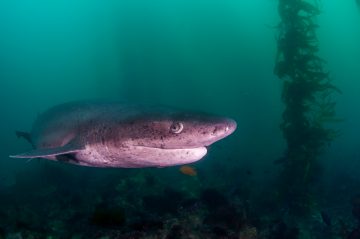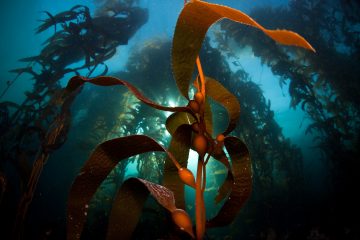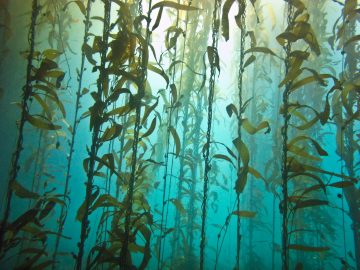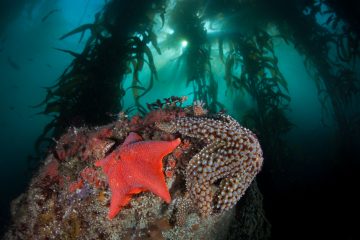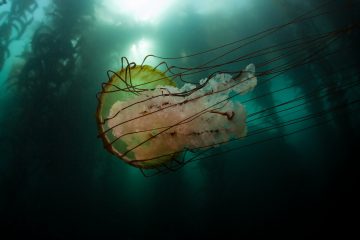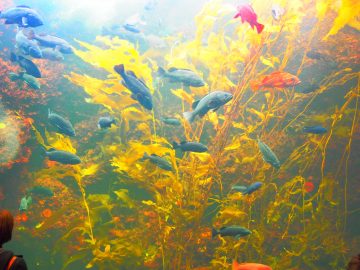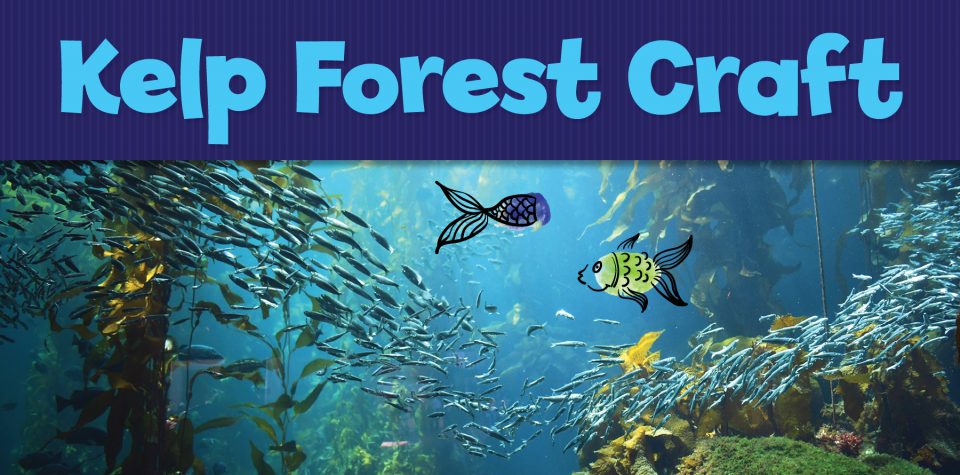
Animal Habitats, Fingerprint Critters, and the Ocean! Oh my!
Does your little scientist love the ocean and its animals? Get ready to have a splashing good time as you create beautiful art and explore the wonder of ocean animal habitats!
So, what exactly is an animal habitat? Animal habitats around the world provide food, water (tons in the case of ocean habitats), shelter, and everything else an animal needs to survive.
Ocean habitats are a blast to explore because the ocean is so big and magical! The ocean covers over 70% of the Earth’s surface and is home to over a million species of animals. Many kinds of plants grow and thrive there, too. Ocean animals, big and small, live in lots of different types of underwater habitats. Some animals make their home among coral reefs, some in the deep sea, and others in what we consider the ocean’s most amazing underwater salad bar… kelp forests!
Explore kelp forests with this animal habitat activity by creating a kelp forest diorama and adorning it with hand-drawn fingerprint versions of animals you would find there!
Supplies for Kelp Forest Craft
- Pictures of kelp forest habitats (scroll down to see our kelp forest photos!)
- Pictures of kelp forest critters (jellyfish, rockfish, crabs, sea lions, seals, gray whales, etc.)
- Cardboard box
- Green ribbon or yarn
- Yellow, green, or brown beads (make sure the holes are big enough to fit the ribbon)
- Small rocks
- Construction paper in a variety of colors, including green, yellow, brown, and white
- Ink pads in bright colors
- Black marker
- Scissors
- Glue or tape
- Hole punch
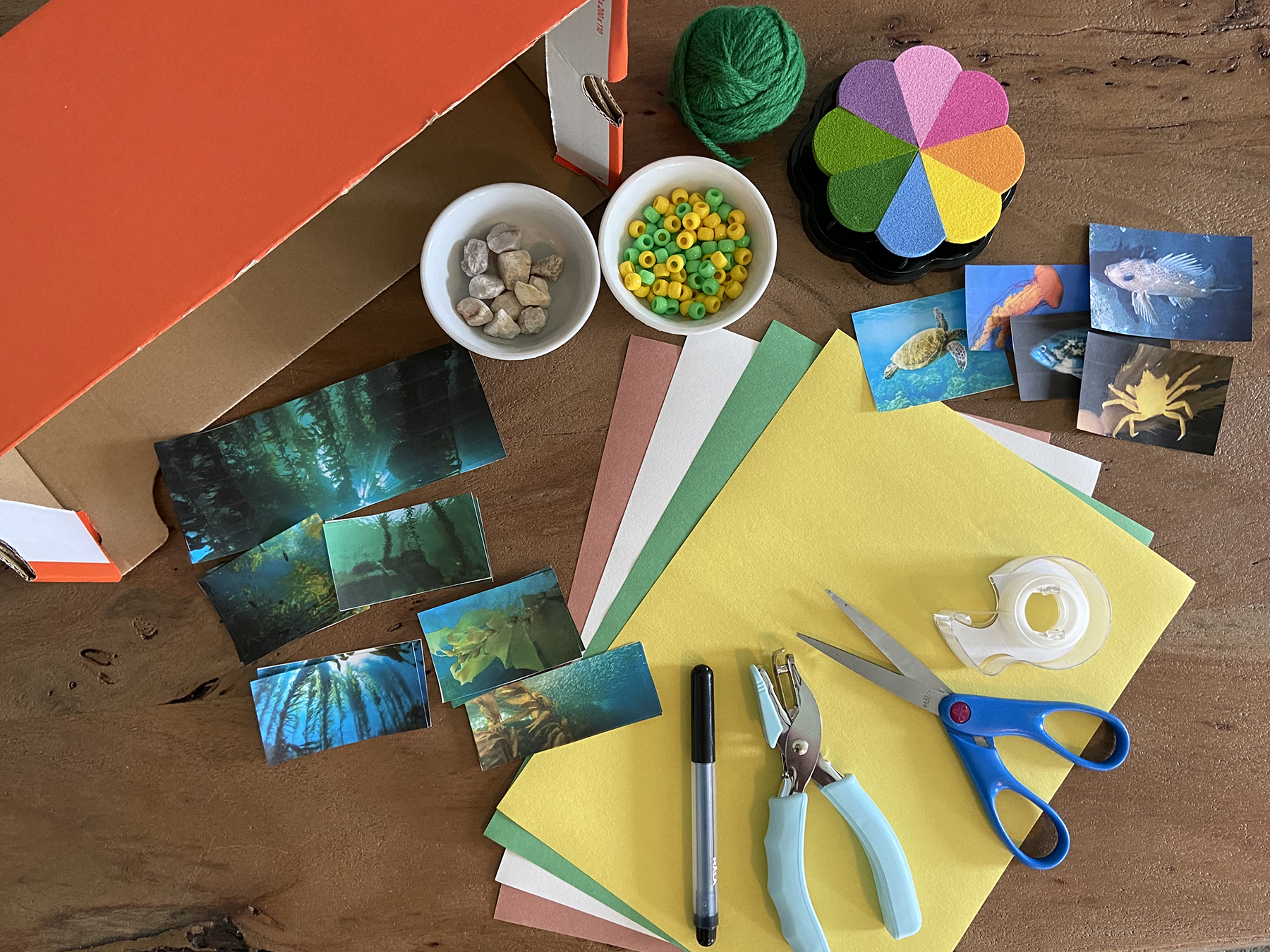
Instructions for Crafting a Kelp Forest Habitat with Fingerprint Critters
Step 1: Create a kelp forest collage by gluing pictures of the kelp forest habitats into your box. Point out any interesting aspects of the habitat. For example: Did you see those little bulbs on the kelp that look like balloons? Those help the kelp “blades,” a fancy word scientists use for “leaves,” stay close to the surface to make sure they get enough sun. The more sun they get, the more ocean salad there is for all the neighbors to share!
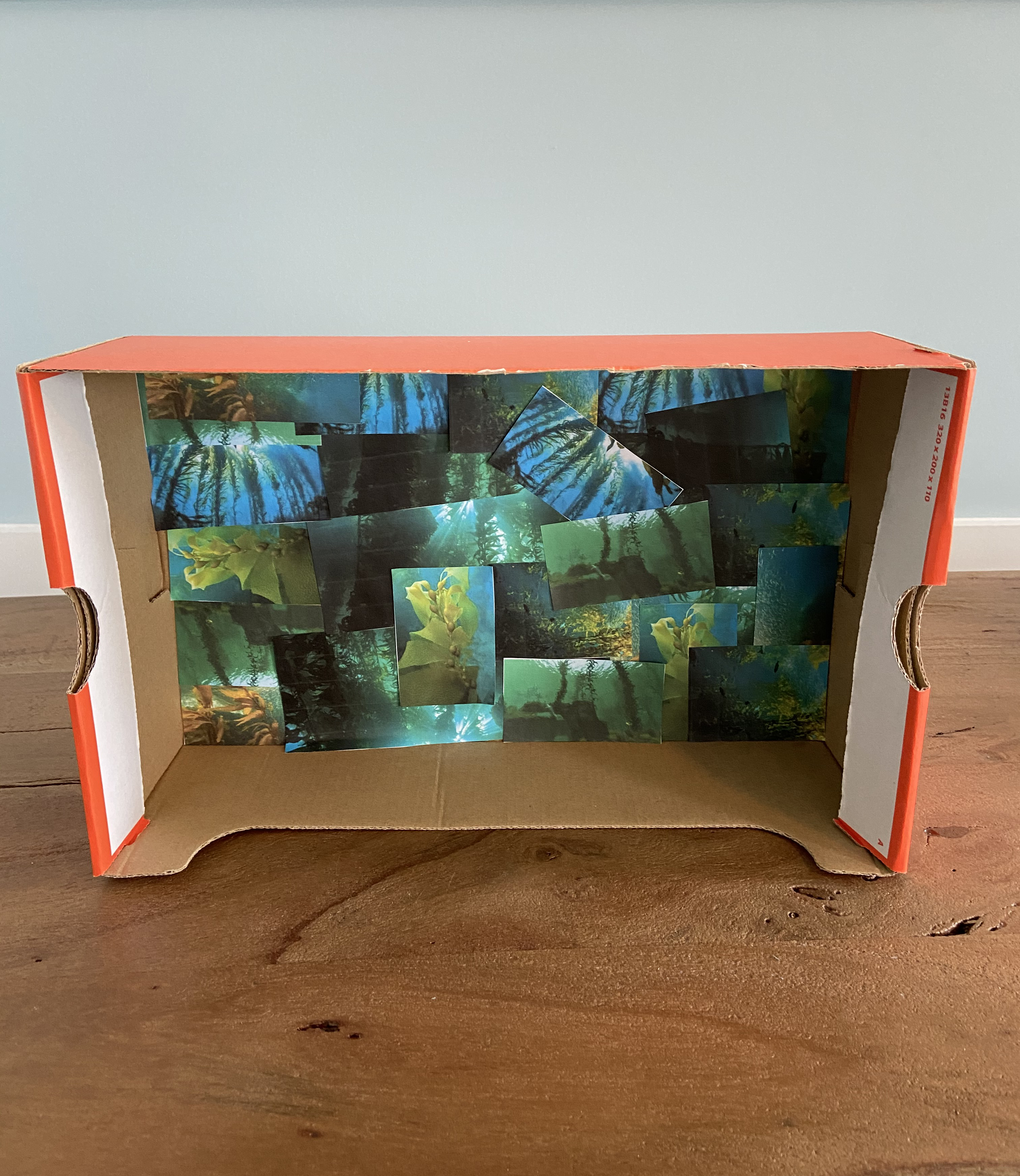
Step 2: Now, let’s make some more kelp to add to this habitat! Start by cutting blades out of green, yellow, or brown construction paper. Remember to make them long, as kelp blades are anything but stubby.

Step 3: Next, it’s time to make a “stipe,” a fancy word scientists use for “stem.” Cut a ribbon or piece of yarn that reaches from the top to the bottom of the box.
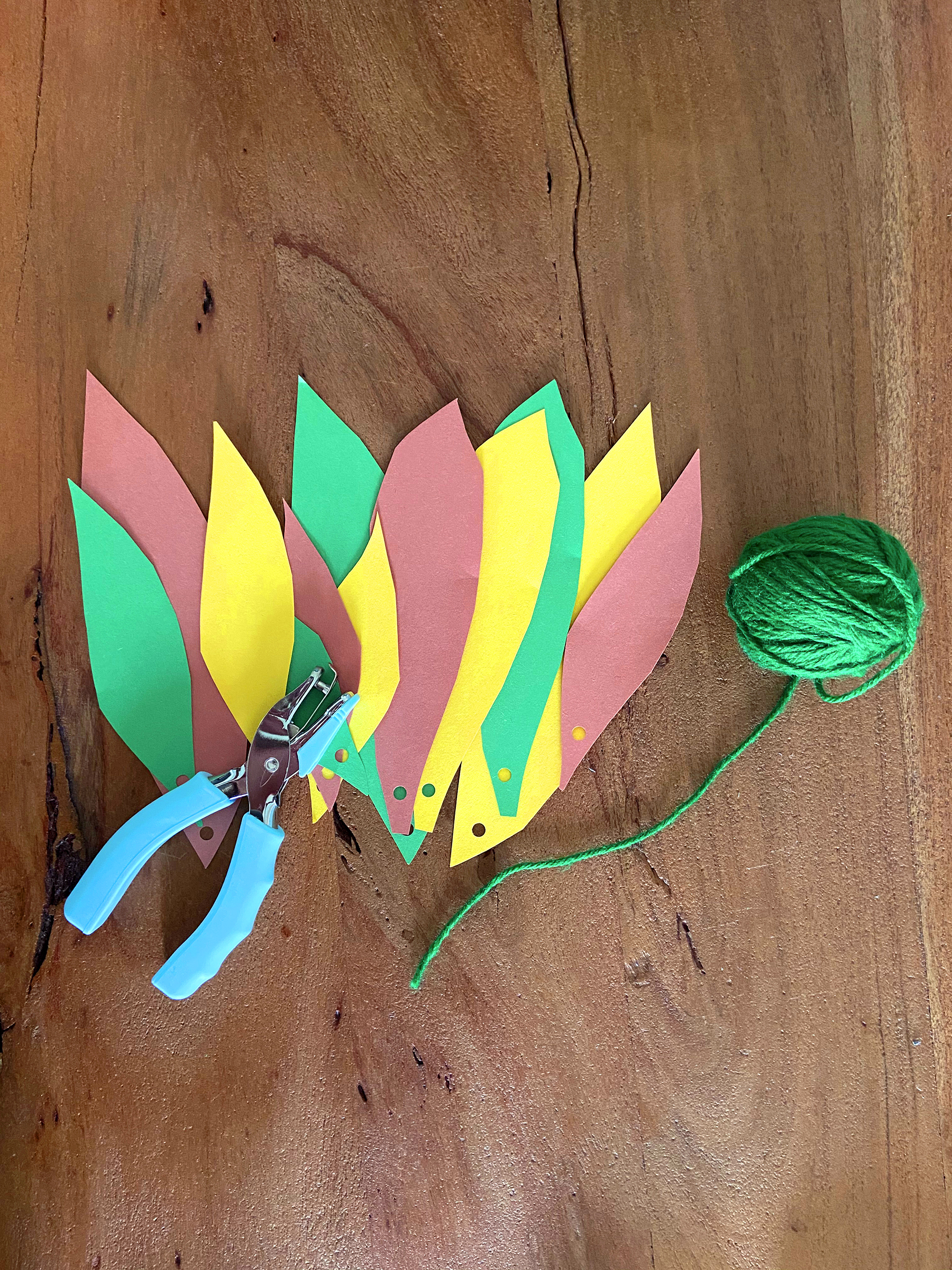
Step 4: Punch a hole in each of your kelp blades. Alternate threading the ribbon or yarn through a blade, then a bead, and repeat this until your kelp looks nice and thick like the pictures. To make your kelp float, tape each stipe to the top of your box so they hang down to touch the bottom. Attach the bottom of the stipe to rocks at the bottom with glue.
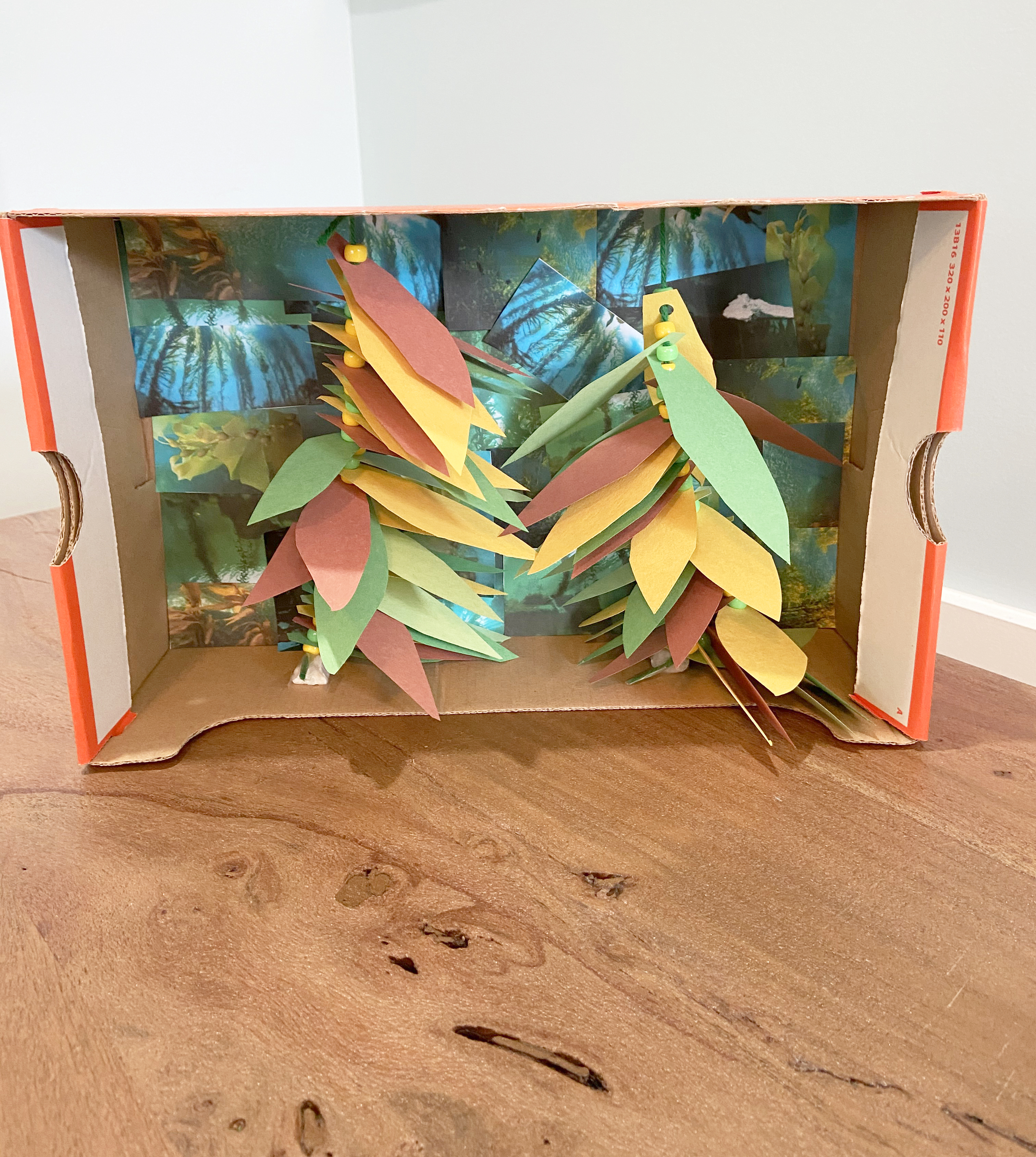
Step 5: Time for fingerprint animals! Use some ink to make a fingerprint. To transform your fingerprint into an ocean critter, draw on features with a marker. Don’t be afraid to get a little wacky and creative. If your child wants their fingerprint crab to have a rainbow mohawk, let them!
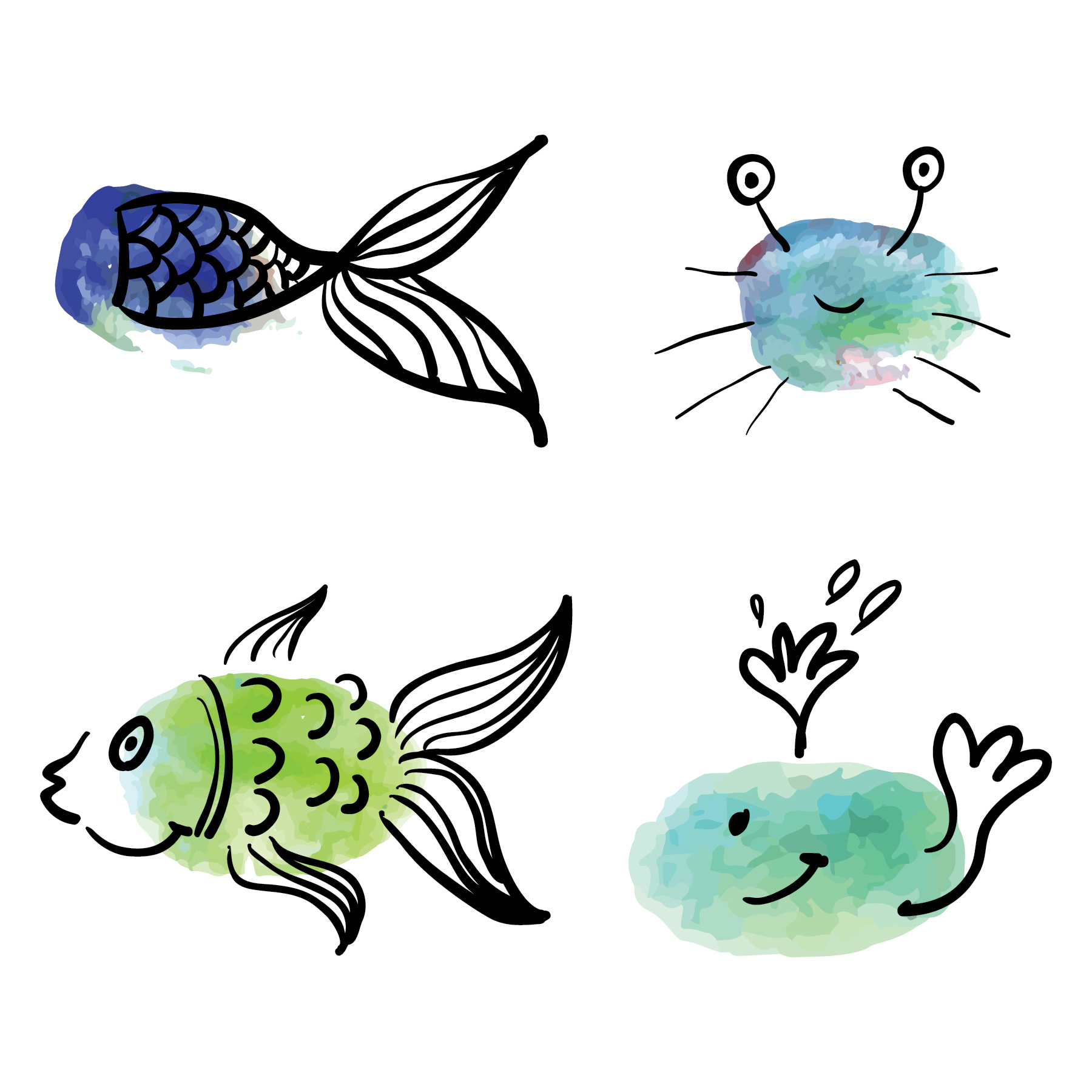
Step 6: Cut out all of your awesome critter creations and tape or glue them all around the kelp forest. Since many animals in kelp forests use the kelp as protection, set a few behind the blades as if they’re playing kelp forest hide-and-seek.
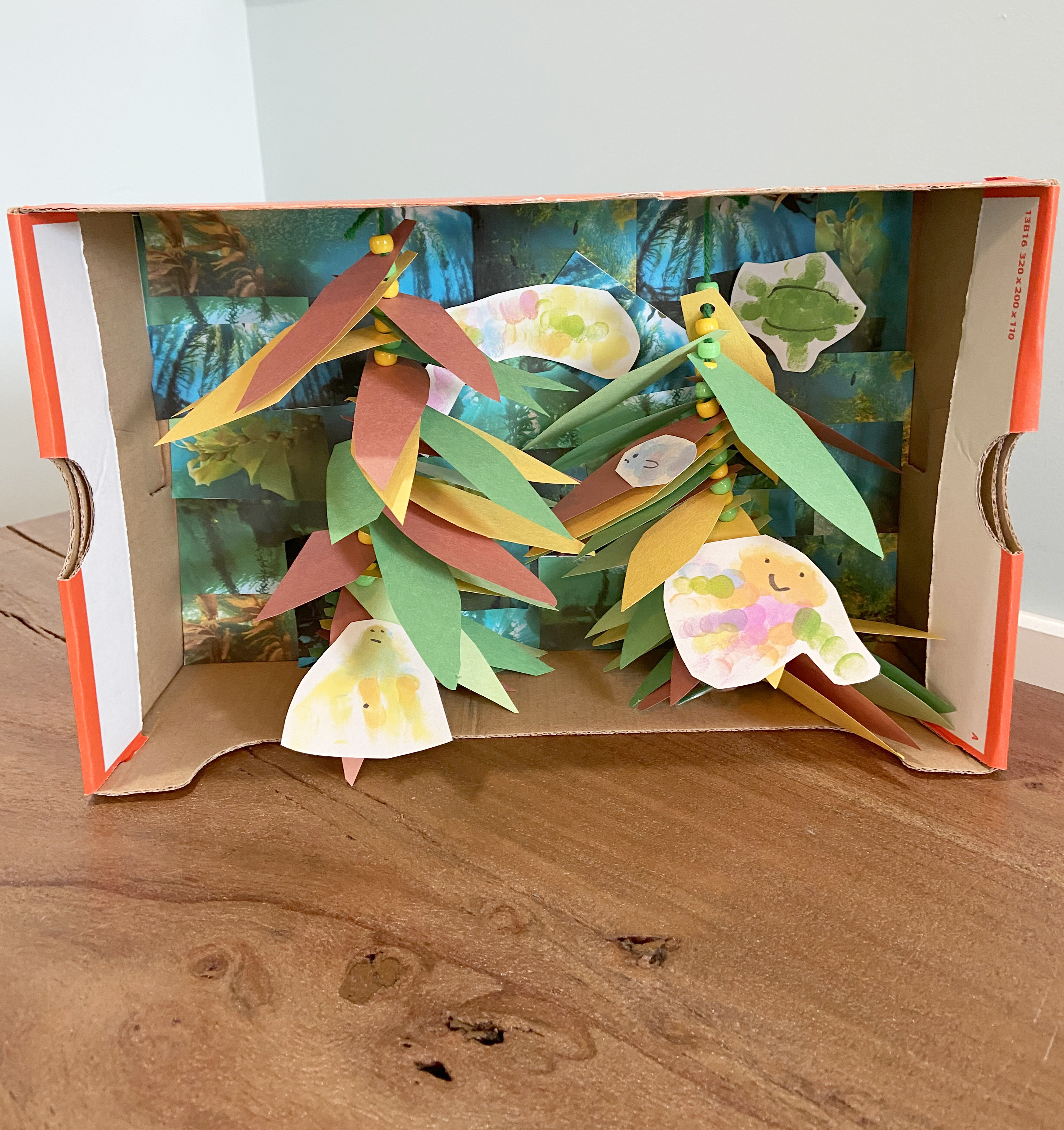
Kelp Forest Photos
Bring on the science!
During this activity, natural questions may come up, or you can start a discussion using the questions below.
1. Where does kelp grow?
Kelp forests tend to be found on the Pacific coast and they thrive on rocky shorelines. They’re able to survive on rocks because kelp doesn’t grow from roots in the ocean floor like other plants. They don’t actually have roots at all! Instead, they have something called “holdfasts.” The holdfasts look like roots but they don’t absorb nutrients. The main purpose of the holdfasts is to help them stay in one place, which they do by attaching to the rocks.
2. How does kelp float?
Remember those balloon-like structures we saw on the kelp? Those are called “gas bladders” and they contain a mixture of nitrogen, oxygen, and carbon dioxide. The kelp blades depend on the floating gas bladders to make sure they have good access to the sun. The kelp blades are where photosynthesis occurs, a process that creates energy and food for the kelp.
If your child enjoyed exploring habitats, oceans, and animals, they’ll love our Early Explorers subscription! Shop below.

